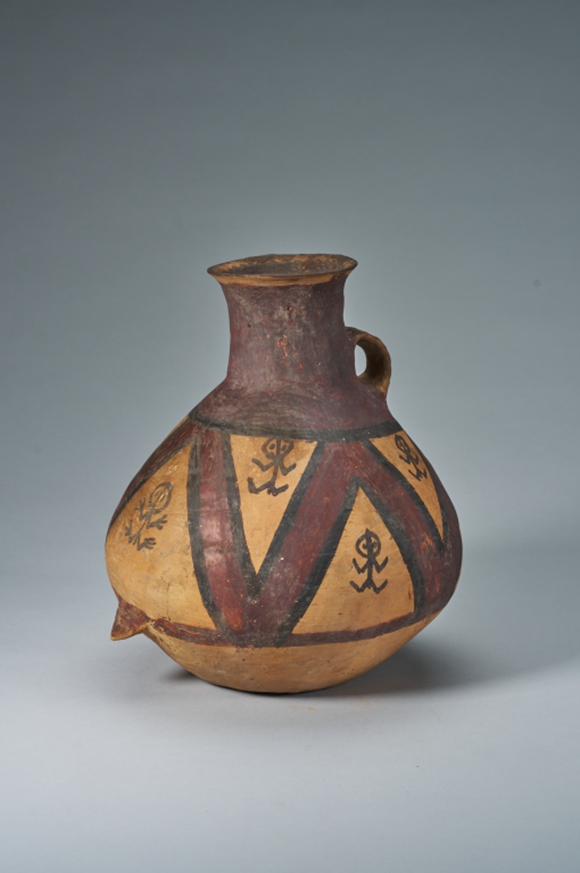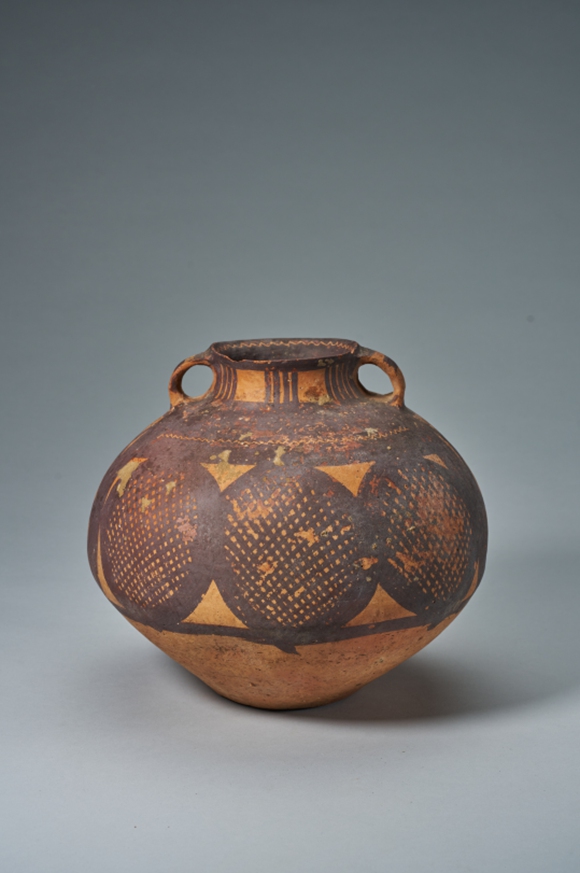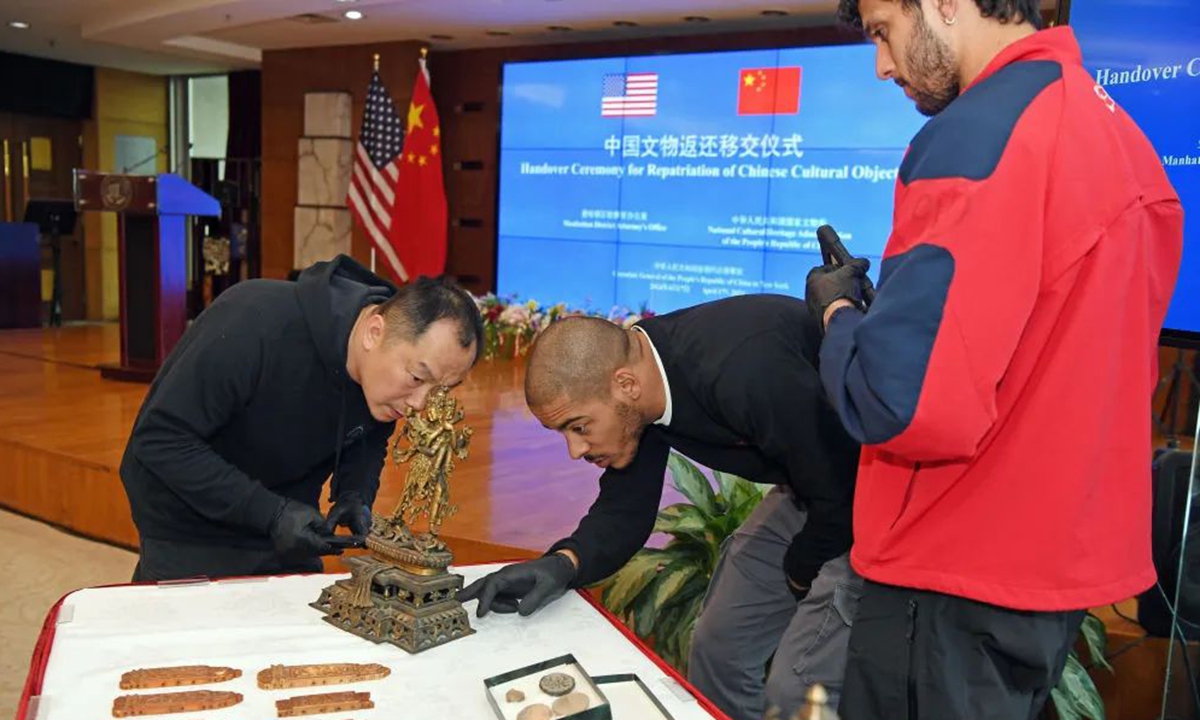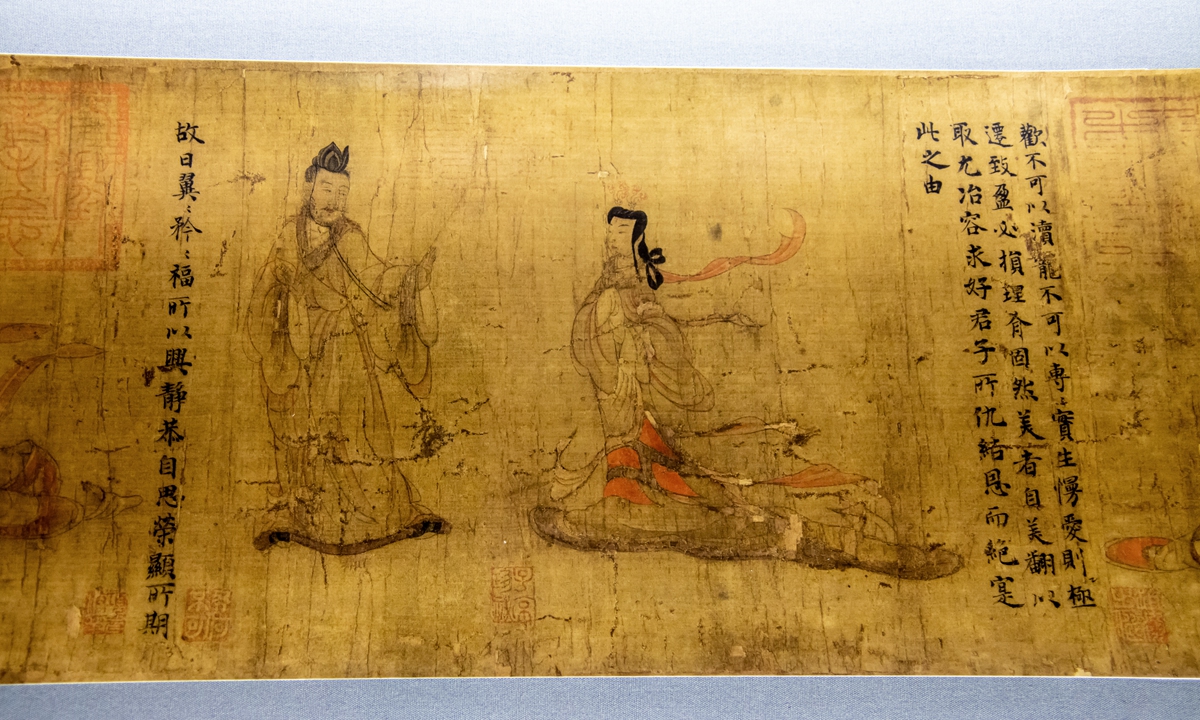Details about 56 relics returned by Italy show intl collaboration, add glow to Chinese civilization
Consensus facilitated

A Majiayao pottery piece newly returned by Italy Photo: Courtesy of the National Cultural Heritage Administration
Featuring pottery ware made 4,800 years ago, a total of 56 ancient Chinese relics have recently been returned by Italy to their home country. Of the relics, 53 pieces belong to China's Majiayao culture. Known for its painted pottery, the Majiayao cultural relic demonstrates that human civilization was thriving 5,000 years ago in Northwest China.
The returned artifacts may just be objects, but they hold symbolic importance. On the one hand, they have brought China's Neolithic lifestyle closer to the people in the modern times, and on the other hand, they show how international collaboration on returning relics can enhance diplomatic ties between countries.
What are they?
The 56 relics consist of 53 Majiayao treasures and another three artifacts including pottery figurines and beasts from the Han (206BC-AD220) and Yuan (1279-1368) dynasties.
Among the 56 relics are eight Majiayao pottery pieces. Whether it is the 50 cm by 40 cm double-handle pot or the 4,800-year-old pottery ware with a heart-shaped motif, the collection has been described as "looking incredibly refined and well-preserved," Shen Tian, who has seen these artifacts firsthand, told the Global Times.
"I still remember the shock I felt when the box was opened. I remember someone at present jokingly said that the patterns on these ancient artifacts looked as if they had just been painted in modern times," Shen noted.
Chinese President Xi Jinping and his wife Peng Liyuan, together with Italian President Sergio Mattarella and his daughter Laura Mattarella, viewed Chinese artifacts returned by Italy at the Great Hall of the People in Beijing on Friday.
Majiayao pottery pieces were predominantly discovered in provinces including Gansu and Shaanxi. Taking the returned 4,800-year-old piece as an example, and considering its heart-shaped motif, Liu Zheng, an expert in Chinese archeological relics, told the Global Times that such decorations have "distinguished the piece of pottery ware as not just a tool, but reveals ancient Chinese people's wisdom of using symbols for documentation."

A Majiayao pottery piece newly returned by Italy Photo: Courtesy of the National Cultural Heritage Administration
Noting fish and rope motifs were also common on painted Majiayao pottery, Liu said that these patterns became "increasingly abstract in ancient records, evolving from depictions to symbols.""Such an evolution is a symbol of civilization since Chinese characters were formed in much the same way," the expert noted.
Painted Majiayao culture pottery has its distinct patterns, such aesthetics, however, have been strongly influenced by the pottery relics of the Yangshao culture that was rooted in the Central Plains prior to the Majiayao culture. Many Majiayao pottery pieces have similar designs discovered in the Miaodi village site - a representative site of the Yangshao culture in Central China's Henan Province.
"These pottery artifacts are therefore evidence that the Chinese civilization has developed continuously and merged with cultural influences from different regions," Liu emphasized.
"The professional team completed tasks such as inventorying and evaluation within a month after these relics were handed to China," Liang Duo, another witness of this batch of relics, told the Global Times.
Prior to their return, the Italian Carabinieri military police informed China about the confiscation of 56 suspected Chinese cultural relics in October 2022 and April 2024. In response, the National Cultural Heritage Administration of China offered detailed identification information and legal reports to the Italian authorities. A return request from China was then formally put forward through diplomatic channels to the Italian government.
Always an exemplar
Calling the return of illicitly exported relics an "international consensus," Zhang Yiwu, a Peking University professor and political advisor, told the Global Times that the facilitation of such a consensus is not always smooth, and "demands sincerity and bilateral cooperation."
"The consensus of return and facilitating the consensus are two different things. The China-Italy cultural cooperation shows the two countries share a respect for the safeguarding of historical treasures," Zhang stressed.
The China-Italy cooperative mind-set in combatting illicit relic trade isn't new. In 2019, a total of 796 Chinese relics that had been illegally exported to Italy were returned to China, marking the largest single return of Chinese cultural relics from abroad in the last two decades.
That batch of relics took more than a decade to be brought back to China since first being seized by the Italian Carabinieri at a local antique market in 2007. These relics include a Majiayao red clay pot, a Song Dynasty (960-1279) porcelain piece, and a clay camel sculpture from the Tang Dynasty (618-907). The diversity and quantity of such artifacts have highlighted the return's "exemplary value to similar cases worldwide," Zhang noted.
"We are proud to return these pieces that represent the heritage and identity of the Chinese people to their rightful place," Alberto Bonisoli, former Italian minister of culture, told the media.
In the same year when these 796 pieces of cultural relics were returned to China, an exhibition called The Journey Back Home: An Exhibition of Chinese Artifacts Returned from Italy was held at the National Museum of China. The exhibition not only made the returned Chinese cultural gems accessible to the public, but is also still remembered by many to this day.
"The recently returned 56 relics made me go through my photo album again to revisit the photos I took at the 2019 exhibition [The Journey Back Home]. I'm deeply touched that such treasures can travel so far in such a long time to reach ordinary visitors like me," Han Xiaofei, a 42-year-old visitor, told the Global Times.



